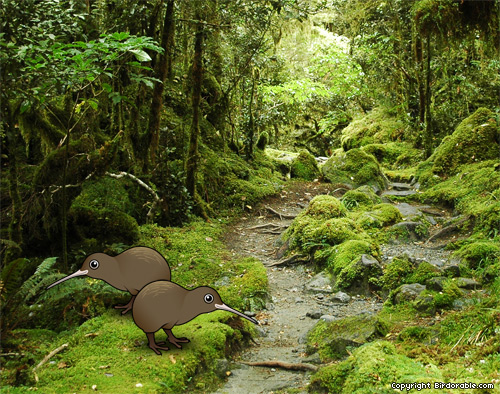Introducing the Birdorable Kiwi

Today we've added the Brown Kiwi to Birdorable. Don't you just love this cutiepie? Here are some facts about this amazing bird:
- Kiwi are flightless birds. After New Zealand split off from Pangaea the Kiwi birds were isolated and no longer had any land predators. As a result they began to evolve smaller and smaller wings because they didn't need to fly.
- They are the world's only wingless birds
- The Kiwi is the only bird with nostrils at the end of its bill
- Kiwi have an excellent sense of smell but weak eyesight
- It can smell insects underground without seeing or feeling them
- Kiwi have no tail
- They are a member of the Ratite family, together with Cassowary, Emu and Ostrich
- The beak of the Kiwi is one-third the length of its body
- The genus name of the bird, Apteryx, is Greek for 'without wing'
- Kiwi are about the size of a domestic chicken (18 to 22 inches or 45 to 55 cm in length)
- They have very strong legs for ripping apart rotten logs
- Kiwi have been around for about 8 million years and haven't evolved much in this time
- There are five different species of Kiwi, all are endangered: Great Spotted Kiwi, Little Spotted Kiwi, Okarito Brown Kiwi, Tokoea and North Island Brown Kiwi
- The Kiwi is the national symbol of New Zealand
- Kiwi can outrun humans
- They are shy and nocturnal
- Male and female Kiwi mate for life; some are known to have been together for 30 years
- Kiwi lay the largest egg in relation to their body size; up to one quarter the weight of the female
- Baby Kiwi look just like a mini version of the adults
- The name either comes from its distinct cry: "kee-wee kee-wee" or from the Polynesian name for the Bristled-Thighed Curlew, the Kivi, which feeds in the same way as the Kiwi
- The New Zealand dollar is often called the 'kiwi dollar'
- Kiwifruit comes from China and was originally called Chinese gooseberries. In the 1960s, kiwifruit farmers in New Zealand decided to market their fruit overseas and called them "kiwifruit", after their national symbol








Comments
Leave a comment
Thank you!